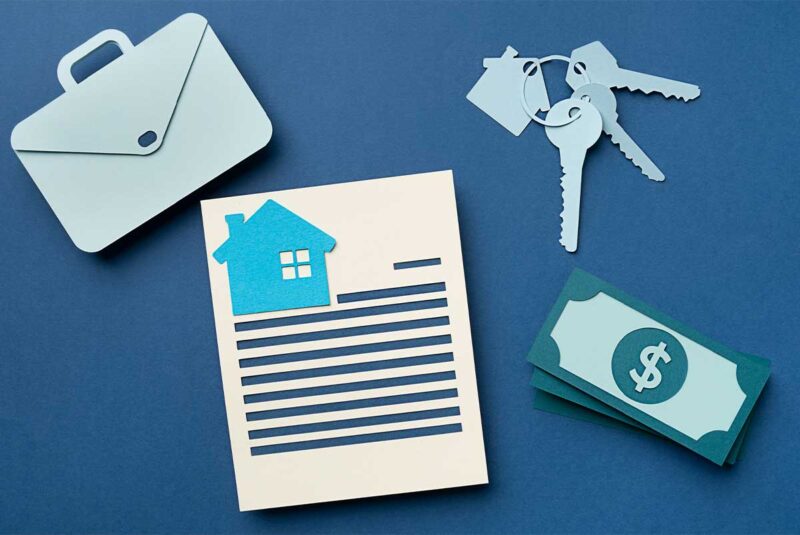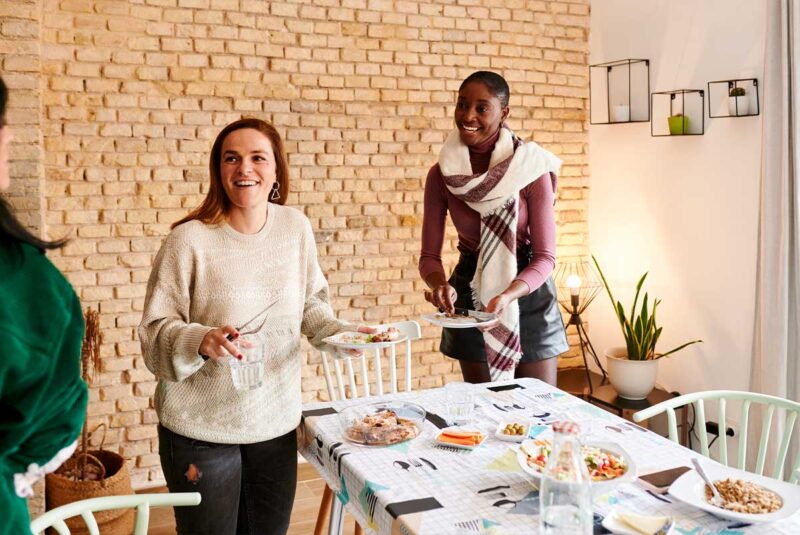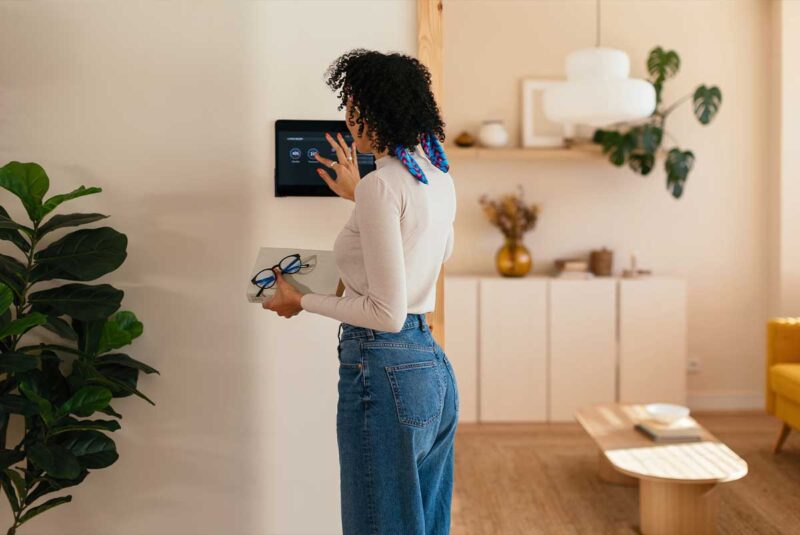Ready To Buy a Home?
Get Approved to Buy a Home
Rocket Mortgage® lets you get to house hunting sooner.
In addition to the down payment, closing costs are one of the biggest upfront hurdles prospective home buyers face. Commonly amounting to between 3% and 6% of the total loan amount, it’s no wonder many first-time home buyers seek help to cover this expense.
If you’re interested in getting help with closing costs, you’ve come to the right place. We’ll go over your options for closing cost assistance, including eligibility requirements and how to apply.
What Is Closing Cost Assistance?
Like a down payment assistance program, closing cost assistance helps aspiring home buyers – especially first-time home buyers – cover the costs of buying a home. Many of these programs are geared toward low- to moderate-income earners and assist higher-income earners in more expensive cities, like New York City and San Francisco.
The closing process comes with a lot of individual steps that carry their own price tags. As a buyer, here are some things you’ll likely be financially responsible for:
- Home appraisal
- Home inspection
- Lender fees
- Attorney fees
- Title search
These costs add up quickly.
Looking to make a change?
Whether you want to buy a house, refinance or take cash out, you’re not alone. The experts are just a click away.
How Closing Cost Assistance Works
Closing cost assistance isn’t a single program. It’s part of a network of down payment assistance programs that work at the federal, state and local levels – all designed to help you become a homeowner. Qualified borrowers can choose to put the money they get toward their closing costs or their down payment.
These programs are offered by a wide variety of organizations, including your state or local housing authority, housing finance agency, nonprofit organizations, community development organizations and even grant funds sponsored by mortgage lenders.
How much closing cost assistance can I get?
What you get in closing cost assistance will depend on several factors, including your credit score, income, location and the type of assistance you’re applying for.
For example, a grant program that doesn’t require repayment may offer less money than a program that’s set up as a low-interest loan.
Typically, closing cost assistance programs will offer a percentage of the home purchase price up to a maximum amount. For example, if you were approved for assistance, you might receive 3% of the purchase price up to a maximum of $10,000.
Types of closing cost assistance
There are five main types of closing cost assistance:
- Closing cost grant: You don’t have to repay the money from a closing cost (or payment assistance) grant.
- Forgivable loan: You don’t have to repay the loan if you live in the home for a specified number of years. If you sell too early, you’ll have to repay the loan based on how long you lived there.
- Deferred-payment loan: It’s like a forgivable loan, except there’s no loan forgiveness. You defer (think: postpone) payment on the loan until you sell the home.
- Zero-interest or low-interest loan: This is like a second loan that you can take out in addition to your mortgage. Taking out a second loan lets you borrow more than you need to buy your home.
- Lender credit: Many mortgage lenders offer credits to cover some or all of your closing costs. In exchange for accepting lender credits, you agree to a higher mortgage interest rate.
First-time home buyer closing cost assistance
It’s worth highlighting that many grants – both at the state and federal levels – are specifically designed to help first-time home buyers achieve the dream of homeownership. The goal of these programs is to help individuals overcome the financial obstacles keeping them from owning property.
You can learn more about these programs here: first-time home buyer grants.
Who Qualifies for Closing Cost Assistance?
The criteria to qualify for closing cost assistance typically include:
- Household income: The income limit is often determined by the area’s median income. (This can be great news for folks living in expensive cities, like Los Angeles or New York City.) And the limit adjusts based on household size.
- Credit score: Eligible borrowers usually need a minimum credit score of 620 – 640.
- Mortgage loan length: Some programs require a specific mortgage term, like 15 or 30 years.
- Property restrictions: There may be limits on the property price, and the property may need to be a single-family home that’s used as a primary residence.
- Home buyer status: Some programs are only available to first-time buyers. Other programs are offered to repeat home buyers.
- Home buyer education: Many of these programs require that applicants complete a home buyer education program or complete a homeownership course. These courses are often offered online and take a few hours to complete.
Where To Find and How To Apply for Closing Cost Assistance
Closing cost assistance programs are available at the local, state and federal levels. Here are some suggestions on how to find them:
Check with your local and state housing finance agency (HFA) for programs in your area.
Many lenders offer grant money and programs for down payment and closing cost assistance. You can learn about these through your HFA, and the lenders can also provide you with information on programs they may partner with.
The U.S. Department of Housing and Urban Development (HUD) has compiled a state-level page, where you can navigate to your state and find home buying programs.
Pro tip: Apply for mortgage preapproval and closing cost assistance at the same time. Your lender needs to know how you’re getting the money to cover your closing costs and how much you’re getting.
These details may help with your preapproval and final mortgage approval.
Other Ways To Get Help With Closing Costs
If you don’t qualify for closing cost assistance, there are other options to consider:
- Ask the seller to pay: You can negotiate with the seller on seller concessions. See if the seller will agree to pay part of your closing costs. However, this strategy usually only works in a buyer’s market. Your lender may limit how much of your closing costs the seller can pay.
- Ask relatives for help: Flip through the family photo album and refresh your memory. Is there a generous relative you can ask for a monetary gift or interest-free loan?
- Roll your closing costs into your mortgage: Some lenders allow you to roll your closing costs into your monthly mortgage payments. When you take this route, expect to pay interest on the closing costs. You could end up with a higher monthly mortgage payment.
- Look for ways to lower your costs: Some closing costs, like legal fees, can vary depending on who you hire. Shop around for quality services at a lower price to help reduce your overall costs.
FYI: Your lender is required to provide you with a Loan Estimate form that breaks down which closing cost-related services you can and can’t shop for.
Closing Cost Assistance FAQs
The back of the napkin method is to estimate 3% – 6% of the loan value. For a more accurate estimate, you can ask your mortgage lender, and they should be able to provide you with a breakdown.
Not all lenders work with closing cost assistance programs. You’ll have to partner with a lender who does. Real estate agents and mortgage brokers usually have a network of lenders who work with payment assistance programs.
Generally, applying for and finalizing a closing cost assistance grant can take up to a month. So ideally, you should get your mortgage preapproval and apply for a closing cost assistance grant or loan before you start shopping for a new home. That way, you won’t delay closing on the home.
Final Thoughts on Closing Cost Assistance
Closing costs are a part of the home buying journey, and you must prepare to pay them. Even if you think you have enough saved to cover your costs, it’s worth checking to see if you qualify for closing cost assistance. If you do, it could save you thousands of dollars and make your dream of owning a home a little easier on your wallet.
Home is worth it.
The mortgage process can be exciting, and we’ll be with you all the way. Take the first step to owning a home. You’ll be glad you did.
The Short Version
- Closing costs are often between 3% and 6% of the loan value. For a $350,000 loan, that would be $10,500 – $21,000. Closing cost assistance can help buyers cover these costs and fees
- You can find many closing cost assistance programs through your state or local housing finance agency (HFA)
- Closing cost assistance may be based on where you live, the type of property you want to buy and your household income




